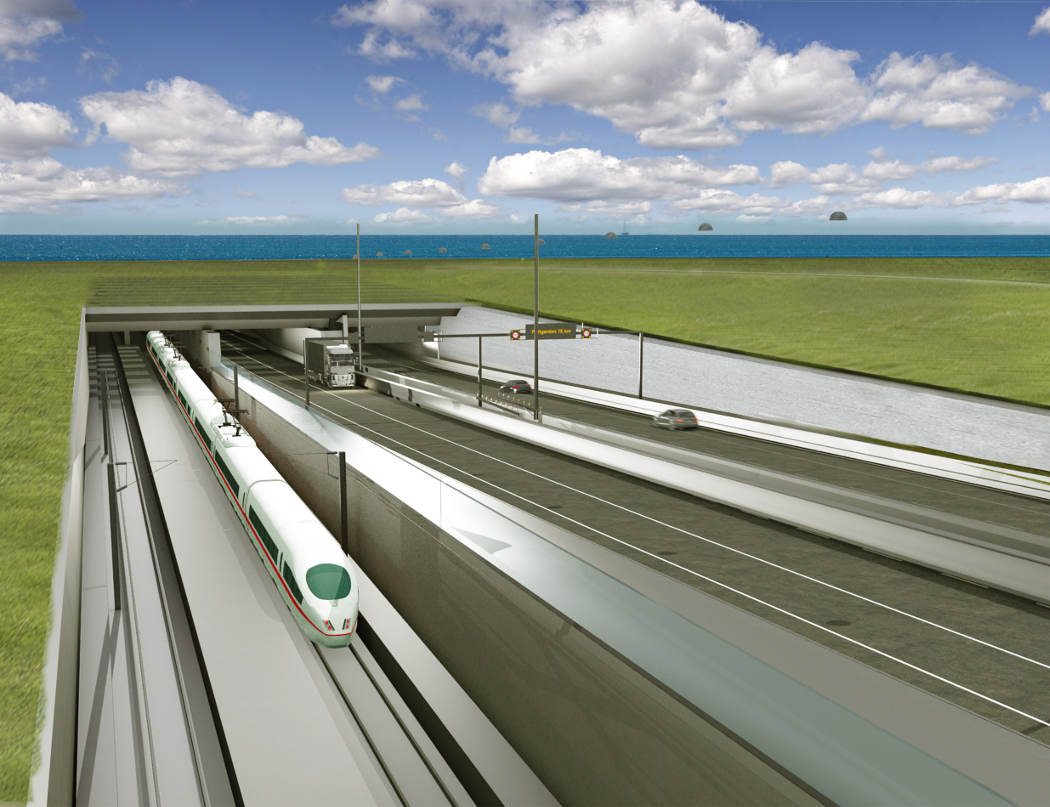European mega-project collaboration deal 11 Oct 2016
Two of the largest mega-projects in the world today have forged a formal cooperation agreement under which they will share experiences and technological insights.
The 18km-long undersea Fehmarnbelt Fixed Link between Denmark and Germany, and the 64km Brenner Base Tunnel between Austria and Italy, are both record-breaking European mega-projects that will play a vital role at opposite ends of the future European transport network (Fig 1).
In order to benefit the development of both projects, representatives from the respective project companies, and members of the two regional development organisations – STRING and Brenner Corridor Platform – have signed an historic agreement on mutual cooperation.
Both are designated as priority projects by the EU Commission, since they aim to remove bottlenecks that impede trade, growth and cross-border cooperation, and promote faster, more efficient and environmentally friendly transportation of passengers and freight across Europe.
The Fehmarnbelt Fixed Link and the Brenner Base Tunnel face different technical obstacles – one is an immersed tunnel that crosses the sea and is not yet under construction, although contracts have been awarded; while the other, which is already under construction, traverses the Alpine mountain range. Both projects, however, share many of the same challenges that very large infrastructure projects experience when it comes to interaction with the surrounding communities and compliance with the legal and regulatory framework of the two different countries they will join.
The agreement will allow the two projects to share technical and scientific innovations and communication initiatives, and facilitates the creation a new forum that will enable local authorities, local inhabitants and organisations to take part in both projects and the opportunities that the new infrastructures will bring.
“Building a cross-border mega-project is a complex undertaking,” said Peter Frederiksen, Chairman of Femern A/S, the Danish state-owned project company tasked with the planning and construction of the Fehmarnbelt Fixed Link. “Each project is unique, but there are also many areas where cooperation will be mutually beneficial. We look forward to sharing experiences with our partners at the Brenner Base Tunnel.”
“Learning from each other, exchanging knowledge, and developing scientific-based best practice are key elements for mega-projects,” said Prof. Konrad Bergmeister, CEO of the Brenner Base Tunnel SE. “This must be the spirit of a growing together of European civil society, and we want to lead this positive exchange together with our friends along the Scandinavian-Mediterranean corridor.”
He added: “The Fehmarnbelt Fixed Link and the Brenner Base Tunnel tackle the most important cross-border bottlenecks, and are thus top priority projects. They will deliver benefits far beyond the borders of the member states that are committed to implementing them.”
Pat Cox, European Coordinator for the Scandinavian-Mediterranean Core Network Corridor, said: “The agreement fits in well with our corridor philosophy of fostering peer-to-peer interaction, communication and knowledge, and best practice sharing. It represents an important milestone not only in terms of cross-border cooperation but also in the unique terms of ‘cross-project’ cooperation.”
Steen Bach Nielsen, Chairman of STRING, said: “Large infrastructure projects create game-changing developments in surrounding communities. Implementing the infrastructure for the benefit of those communities requires dialogue, planning and political will.
“With regard to the Brenner and Fehmarnbelt projects, the new infrastructure will benefit their surrounding communities in terms of economic growth, jobs and sustainable development. We can learn from each other – and together influence political decision-making beyond our regional and national interests.”
References
- Brenner prepares final procurement push – TunnelTalk, September 2016
- Complex Isarco River excavations in Italy – TunnelTalk, July 2016
- TBM launched for Brenner exploratory tunnel – TunnelTalk, October 2015
- Fehmarn Link mega-project contract awards – TunnelTalk, March 2016-10-11
- European connectivity masterplans – TunnelTalk, April 2015
|
|
|
|
|
Add your comment
- Thank you for taking the time to share your thoughts and comments. You share in the wider tunnelling community, so please keep your comments smart and civil. Don't attack other readers personally, and keep your language professional.




